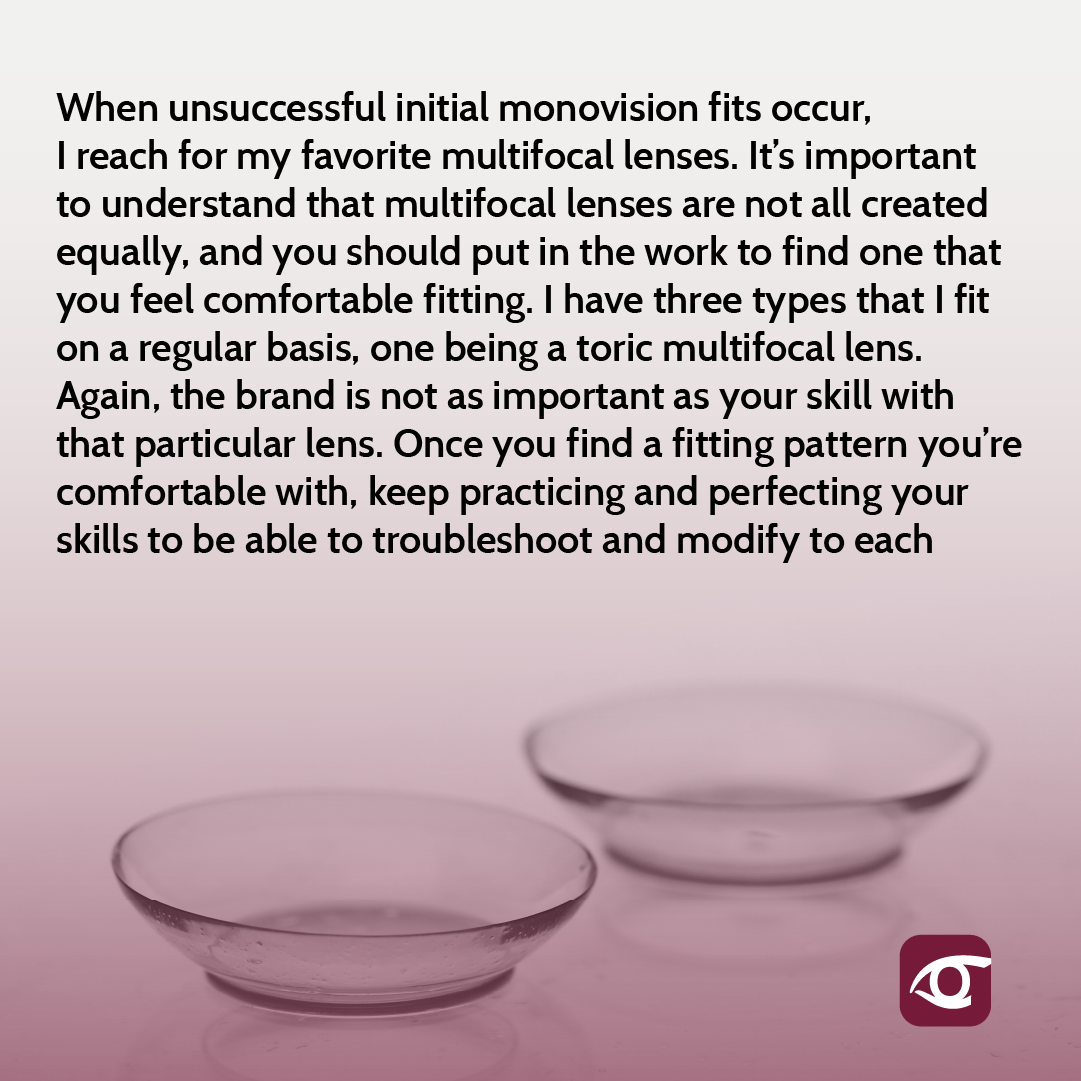
 With the rapid advancements in the contact lens realm, sometimes it’s hard to keep up with the latest and greatest technology when it comes to presbyopic contact lenses.
With the rapid advancements in the contact lens realm, sometimes it’s hard to keep up with the latest and greatest technology when it comes to presbyopic contact lenses.
There are so many different designs of contact lenses on the market, and with the multifocal contact lens designs, each lens has a different fit pattern, making it difficult for practitioners to keep up.
Though it’s always a good idea to keep up with new advancements and designs, here are my thoughts on how to determine which method of presbyopia management with contact lenses is right for your patient.
The Monovision contact lens fitting method has been around for quite some time and has been the favorite for many of our contact lens pioneer doctors. Since monovision involves undercorrection (or overcorrection) of the non-dominant eye in order to improve near vision, it’s a simple way to allow patients to have functional near vision while maintaining their distance vision.

In early presbyopia, when I first start talking to my patients about presbyopic contact lens options, I like to introduce monovision by presenting a corresponding trial lens over their non-dominant eye in the office. This is where I like to have the conversation, and the patient determines if the clarity they’re sacrificing at distance is worth the functional vision they get up close with monovision. This is a great way for patients to understand that even though they’ve been having crisp and clear distance and near vision for most of their lives, now is the time to make a change because physiological changes within the visual system are happening.
If the patient is happy with that small change, or at least willing to try it, I have the patient take the corresponding trial lenses home and return to the office wearing those lenses in one to two weeks. Most of the time, the adaptation period is minimal. At this time we either finalize the prescription or we’re back to the drawing board.
When unsuccessful initial monovision fits occur, I reach for my favorite multifocal lenses. It’s important to understand that multifocal lenses are not all created equally, and you should put in the work to find one that you feel comfortable fitting. I have three types that I fit on a regular basis, one being a toric multifocal lens. Again, the brand is not as important as your skill with that particular lens. Once you find a fitting pattern you’re comfortable with, keep practicing and perfecting your skills to be able to troubleshoot and modify to each patient’s needs.

Even though it’s great to have a general rule on how to begin, taking a thorough case history including hobbies and occupation will give you insight on where to begin and where to modify your fitting. Always start simple and move your way up in order to avoid overwhelming patients. No two patients are the same when it comes to presbyopia management, so make sure to get a general idea of their working distances and understand what they do most of the day. This will help you understand where the problem is and how to fix it.
Now that you have a general idea of my approach to multifocal contacts vs. monovision, see if it helps you perfect your fitting patterns. Of course, there are other factors to keep in mind including patient demographic and access to various brands of contact lenses. However, always remember to stay on top of all of the information regarding new developments for presbyopic patients to be able to answer all of your patient questions and provide your opinion.
~ Dr. Amadian
